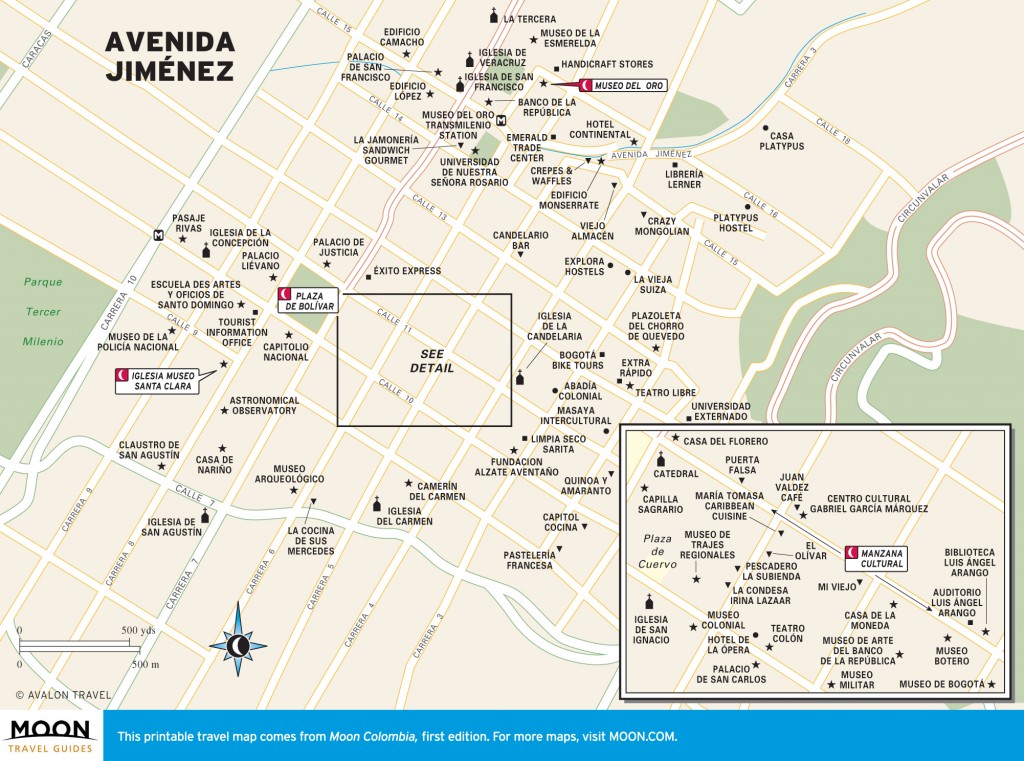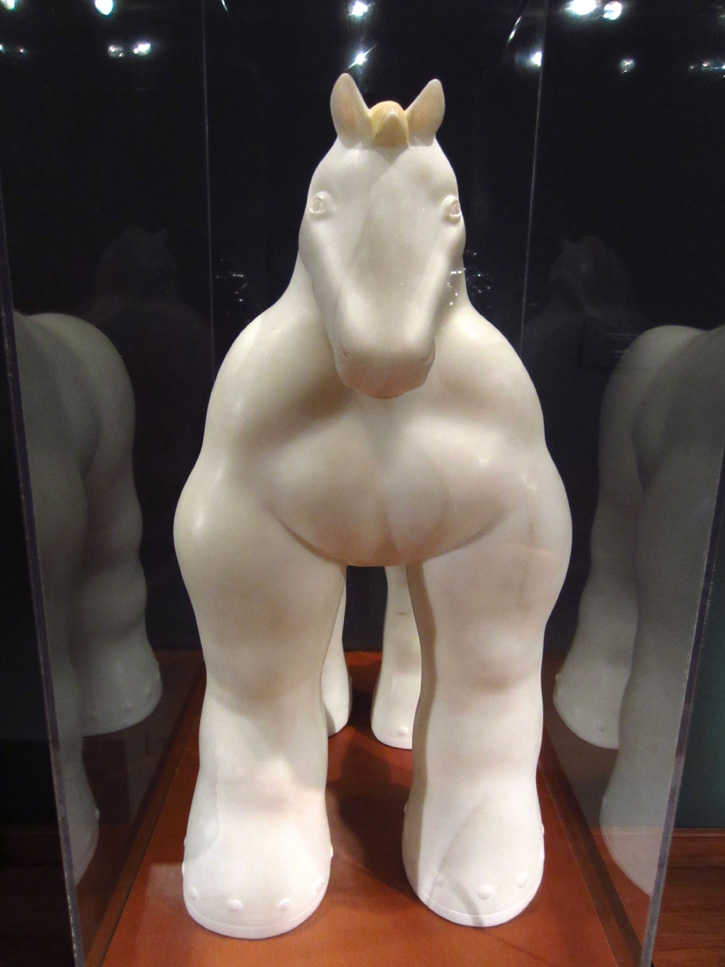The Manzana Cultural (Cl. 11 No. 4-41) of the Banco de la República is a “Cultural Block” (not Cultural Apple) that comprises the Biblioteca Luis Ángel Arango, the library’s concert hall, the Museo Botero, the Museo de Arte, the Colección de Arte del Banco de la República, and the Casa de la Moneda. Without a doubt it is one of the most important addresses for visual arts in Colombia—and a required stop on any visit to Bogotá.

Avenida Jiménez
With 14 galleries highlighting Colombian art from the 17th century to present day, the Colección de Arte del Banco de la República (Cl. 11 No. 4-41, tel. 1/343-1316, 9am-7pm Mon. and Wed.-Sat., 10am-5pm Sun., free) is an excellent opportunity to discover Colombian art. Look for the series of “dead nuns.” It was customary to paint nuns twice in their lifetimes: once when they entered the convent and once more moments after passing away. The nuns from this particular series lived at the nearby convent of the Iglesia de la Concepción.
Another highlight is the spectacular—if a tad on the gaudy side—La Lechuga monstrance (a monstrance is a receptacle to hold the Host). It’s called La Lechuga, meaning lettuce, because of its 1,486 sparkling emeralds, but it is also adorned by hundreds of diamonds, rubies, amethysts, and pearls. The Spaniard who created this extraordinary piece charged the Jesuits the equivalent of a cool US$2 million when he finished it in 1707. Hidden away in a vault for over 200 years, it was acquired by the Banco de la República in 1987 for US$3.5 million.
Nineteenth-century landscapes, portraits by impressionist and Bogotá native Andrés Santa María, and works from an array of well-known Colombian artists from the 20th century (including Alejandro Obregón, Eduardo Ramírez, Guillermo Wiedemann, and Luis Caballero) are other museum highlights. Free guided tours in Spanish are offered several times a day.
Behind the Colección de Arte, in a sleek modern “white box,” is the Museo de Arte del Banco de la República (Cl. 11 No. 4-21, tel. 1/343-1212, 9am-7pm Mon. and Wed.-Sat., 10am-5pm Sun., free), which hosts temporary exhibits and has one floor dedicated to 20th-century Latin American and European art from the Banco de la República collection. On the bottom floor is the Parqueadero (2pm-7pm Wed.-Mon.)—the “Parking Lot”—a sort of laboratory on contemporary art.

Medellín-born Fernando Botero’s distinctive style is on full display at the Museo Botero, along with European and American masterpieces donated by the artist. Photo © Eli Duke, licensed Creative Commons Attribution Share-Alike.
In the Museo Botero (Cl. 11 No. 4-41, tel. 1/343-1212, 9am-7pm Mon. and Wed.-Sat., 10am-5pm Sun., free) there are still lifes, portrayals of everyday life in Colombian pueblos, and social commentaries by the most accomplished Colombian artist, Medellín-born Fernando Botero. In addition to paintings of corpulent Colombians, there are bronze and marble sculptures of chubby cats and pudgy birds. One side of the lovely colonial house, which surrounds a sublime courtyard, displays the artist’s exceptional personal collection of European and American art, including works by Picasso and Dali. All of these were donated by the maestro to the Banco de la República so that Colombians of all backgrounds could appreciate and enjoy them without paying a peso—an extraordinary opportunity. Once the home of archbishops during the colonial era, the building was set ablaze during the 1948 disturbances of the Bogotazo. It has been painstakingly recreated.
Connected to the Museo Botero and the Colección de Arte by patios and a Botero gift shop, the Casa de la Moneda (Cl. 11 No. 4-93, tel. 1/343-1212, 9am-7pm Mon. and Wed.-Sat., 10am-5pm Sun., free) was where the New World’s first gold coins were produced starting in the early 17th century. The museum’s Colección Numismática shows the history of the Nueva Granada mint.
Designed by Rogelio Salmona, the Centro Cultural Gabriel García Márquez (Cl. 11 No. 5-60, tel. 1/283-2200, 9am-7pm Mon.-Sat., 10:30am-5pm Sun., free) was a gift from the Mexican government in honor of the 1982 Nobel Prize winner for literature, Colombian Gabriel García Márquez. Gabo, as he is called, has lived in Mexico since the 1960s. On the main level, where you can enjoy a nice sunset view of the cathedral, is a bookstore with an ample selection of books on Colombia. Next to the Juan Valdez Café below is a space where photography and art exhibits are often shown.
Excerpted from the First Edition of Moon Colombia.